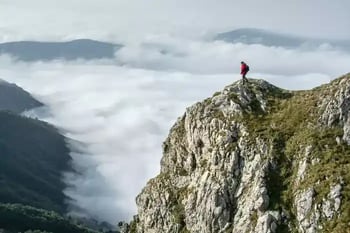Understanding the Post-Production Process in a Video Production Company
Unlock the magic of video creation! Explore the journey of post-production, from raw footage to captivating content, in our engaging guide.
As video creators, we're all on a quest to tell stories that resonate with our audience, aren't we? Well, one vital part of this journey is understanding the post-production process. This process might seem like a Pandora's box of technical terms and complex tasks, but fear not. This article will guide you through the magic of post-production, in a way that's conversational, helpful, and supportive.
A Bird's Eye View of the Post-Production Process
Imagine you've just wrapped up a fantastic day of shooting video. All your footage is captured and ready. But this isn't the finish line, rather it's the starting line of an equally (if not more) important race: the post-production process. This is where your raw footage transforms into a compelling video that can captivate an audience.
This stage involves several processes, including editing the video and audio, color grading, adding visual effects (VFX), sound design, and finally, rendering the video for distribution. Every step is like a puzzle piece that fits perfectly to complete the whole picture.
Editing - Sculpting the Story
Let's start with the first step, editing. As French director Jean-Luc Godard once said, "Film is truth 24 frames per second, and every cut is a lie." Your raw footage might have hours of content, but what matters is how you craft these snippets into a compelling narrative.
You can think of this process like sculpting. Out of a slab of marble (your footage), you're chiseling out your story. You're looking for the best takes, arranging sequences, and ensuring that the pacing and rhythm of your video feels right.
Professional editing software like Adobe Premiere Pro or Final Cut Pro offer a range of tools to help you sculpt your story. Remember, the goal is not to use all the features these tools offer but to utilize them in a way that best serves your video's purpose.
Sound Design and Music - Painting the Audio Landscape
Once your visuals are in place, it's time to weave in the audio. Sound design, voiceover, and background music fall into this category. The sound adds depth to your visuals and often carries an emotional weight that can make your story more immersive.
When it comes to music, the choice can significantly impact the mood of your video. The right music can help set the tone, pace, and feel of the entire piece. Tools like Adobe Audition or Pro Tools can help you mix the audio in a way that complements your visuals.
Color Grading - Enhancing the Visual Aesthetic
Color grading is like the secret sauce that gives your video its unique visual flavor. It’s the process of altering and enhancing the color of your video footage.
Color grading can set the mood of a scene, direct the viewer’s eye to a specific subject, or help tie together shots from different times and locations to create a coherent look. DaVinci Resolve and Adobe Speedgrade are popular tools that offer comprehensive color grading features.
Visual Effects - Adding the Wow Factor
Visual effects (VFX) might not be needed for all types of videos, but when they are, they can really pack a punch. VFX ranges from simple tasks like removing an unwanted object in your scene to complex procedures like creating lifelike creatures from scratch.
Depending on the requirement, VFX can be time-consuming and require specialized skills. Software such as After Effects or Nuke are commonly used for VFX.
The Final Render - Getting Ready for Showtime
Finally, once all these elements are perfectly in place, it's time to render your video. Rendering is the process of generating the final video product from your edited project.
When rendering, you need to consider the video's purpose and distribution platform. For example, the rendering settings for a video destined for Instagram might be different from a video designed for a cinema screen.
Wrapping Up
Now, we've scratched the surface of the post-production process. There's a lot more depth to each step, and we'll continue to explore these in subsequent articles.
Remember, as overwhelming as it might seem, learning the post-production process is a journey. You'll become more comfortable and skilled as you work on more projects. Keep learning, keep experimenting, and most importantly, keep creating.
While the technical aspects are essential, it's crucial to remember that these are merely tools in your storytelling arsenal. Your ability to tell compelling stories is what truly makes a video great.
Post-production, while being a challenging and sometimes intricate process, can also be a highly creative and rewarding endeavor. It's where your video truly comes to life, where your story finds its voice and your vision becomes a reality. Happy creating!
Written by Jonathan English CEO for Venture Videos — a full-service video production agency that specialises in producing creative videos & campaigns that get real results.


















